
“Today, most Americans are three or four generations away from the farm,” says Alabama dairyman Will Gilmer. “They’re dependent on a reliable supply of food products, but have no firsthand knowledge of where that food comes from or how it’s produced. My utilization of social media allows me to share my love of dairying and of agriculture with a much broader audience than just those in my local community and those in the farm organizations I belong to."
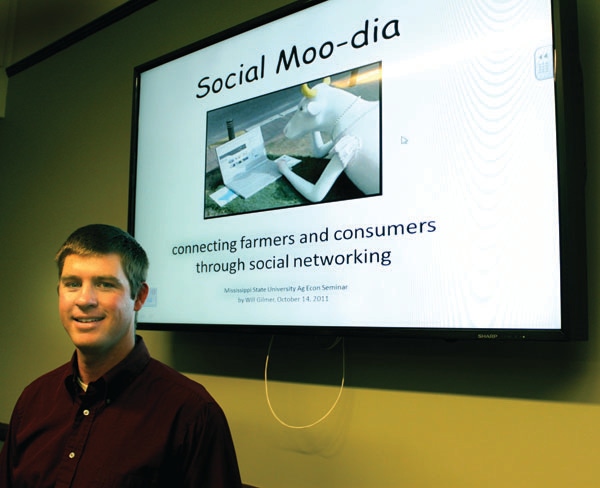
It takes a heaping helping of chutzpah to make a video of yourself driving a tractor spreading liquid cow manure and singing at the top of your voice a self-composed ditty, “Water and Poo,” that details the benefits of the soupy slurry to your farm’s forage crops.
Water and poo, water and poo, I’m gonna tell you how
we manage our water and poo, in an eco-friendly way,
yeah, that’s how we like to play.Dairy farmers know how
to manage their water and poo.
It takes even more guts to put that video on the Internet for all the world to see and to comment on, which is just what Will Gilmer has done.
He and his father, David, operate Gilmer Dairy Farm, just across the Mississippi/Alabama state line at Sulligent, Ala., only 60 miles from their alma mater, Mississippi State University.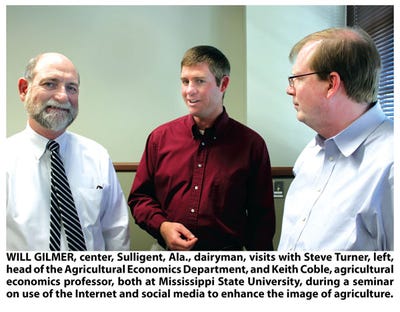
The “Water and Poo” video (Warning! You’ll find the tune lodges in your brain, whether you want it to or not) and some 50 others (not all of them musical) portraying life on their dairy farm are only a part of his program of utilizing the Internet and social media to help foster the public’s image of dairying specifically, and agriculture in general.
It includes the farm’s website (http://www.gilmerdairyfarm.com), which has information about the farm, environmental stewardship, and animal care, a photo gallery of scenes around the farm, and links to his “The Dairyman’s Blog,” Facebook and Twitter, industry news, videos on YouTube, and to various farm organizations.
Video viewed over 33,000 times
On the day he spoke at the Mississippi State University Agricultural Economics Seminar, “Connecting farmers and consumers through social networks,” the “Water and Poo” singing video on YouTube had been viewed more than 33,400 times.
Now, spreadin’ slurry ain’t a daily chore, we’ve got a big tank in which we keep it stored
until we can apply it on our land in accordance with a nutrient management plan…
“Today, most Americans are three or four generations away from the farm,” Gilmer says. “They’re dependent on a reliable supply of food products, but have no firsthand knowledge of where that food comes from or how it’s produced.
“There are so many myths and falsehoods being circulated about animal agriculture — the chemicals we use are harmful, the antibiotics we use are tainting our meat, milk, and poultry, animal wastes are fouling our water, and on and on.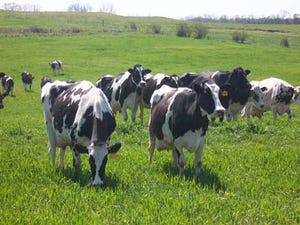
“My utilization of social media allows me to share my love of dairying and of agriculture with a much broader audience than just those in my local community and those in the farm organizations I belong to.
“The Internet and social media allow us an unparalleled opportunity to reach more people, on a wider scale, than just locally. These media remove the barriers of time and distance and allow us a far broader dialogue with the consumer public.”
Gilmer, who grew up on the farm that was being run by his father and his uncle, says that when he enrolled at Mississippi State University, “I didn’t really expect I’d be coming back o the farm after I got a degree. I knew I could come back, but I just didn’t see dairying as my future.
“Later, when my uncle decided to get out of the family business, I asked my father if there was an opportunity for me to come back to the farm. Somewhere along the way, I realized I was missing farming — that it was what I really wanted to do. Dad told me he had made provisions for such an eventuality, but had made it a point to never encourage me to choose farming, that if I did, he wanted it to be 100 percent my choice.
“I’ve been back 10 years now. It’s a demanding routine — we milk at 3 a.m. and 1 p.m. every day of the year — and then there are all the related chores, planting and harvesting hay and forages, looking after the animals, and taking care of the business end of the operation.
“In 10 years, there are only eight nights that Dad and I have been away from the farm at the same time. But, I love it and now I couldn’t imagine doing anything else.”
By attending and being active in farm organizations, including the chairmanship of the American Farm Bureau Federation’s Young Farmers and Ranchers Committee, Gilmer says he became more aware of, and concerned about, the public’s lack of knowledge about modern agriculture — and the many misconceptions promulgated by anti-agriculture groups.
“I talked with my parents about what we could do, in some way, as small farmers concerned about these unfavorable impressions of agriculture, to help create a more positive image of what we’re doing as dairy farmers specifically, but also to help consumers better understand what American farmers are doing to keep our people fed and clothed and to support a thriving export sector.
“More and more, people are asking questions about their food and about food safety, and I thought we could use the communications opportunities of the Internet and social media to help them fill in the blanks.”
Gilmer says he has participated in focus groups, where hidden cameras are recording consumers as they’re asked about their impressions of agriculture and farmers, and “it’s eye-opening to see firsthand how little the average person knows about agriculture and the production of their food.
“A lot of people have a romanticized image of agriculture as it existed a half-century or more ago, and think that we could return to that kind of agriculture and still produce enough to feed the world.
Telling agriculture's side of the story
“We can either sit back and let others tell agriculture’s story — often not the whole story, and often with a very unfavorable slant — or we can use these tools to tell our story ourselves. If anti-agriculture organizations are putting out inaccurate information that is creating misconceptions about farming, we have only ourselves to blame if we don’t provide our side of the story.”
Now when it’s warm, we put it on bermudagrass, and when it cools off, other crops start growin’ fast.
Fescue and oats are two that benefit the most from the nutrients found in our water and poo.
He started the Gilmer Dairy Farm website in 2003 and since then has added Facebook, Twitter, and YouTube posts, and his blog.
There are now 250 million Facebook users, Gilmer notes. “If Facebook were a country, it would be one of the world’s largest. Facebook, Twitter, YouTube are all communication tools that are increasingly being used in agriculture.
“I use Facebook mainly to try and make people feel good about dairying, with photos of cows contentedly grazing, pasture and farm scenes, etc.
“Facebook allows me to do instant updates, either from my computer or from my smart phone on the fly. I have about 1,900 people who ‘like’ my Facebook posts.
“I use Twitter a lot — it’s a lot more immediate, a lot more personal, and allows more opportunity for a bit of ‘personality’ in very short messages. I can also upload photos and when I go to farm meetings I can provide frequent tweets about things I hear, people I talk with, etc.”
For the more hot button issues, Gilmer says, he will generally use his blog, which he has been doing since 2007. “It’s a way to keep people engaged, to let them know what’s going on in our farming operation, and gives me an opportunity to expand on issues that may be in the news regarding dairying, food safety, legislation, etc.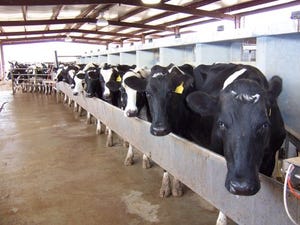
“It allows more room for a full explanation of the message I’m trying to get across, as well as an opportunity for conversation and exchange of ideas and opinions, particularly on such issues as agricultural subsidies.
“If it’s something controversial, where the viewer might say ‘You’re biased because you’re a farmer,’ I’ll take the approach, ‘Yes, I’m a farmer, but here are some of the facts based on my experience, on proven research, etc.’
“In the animal sector, there is a lot of concern by the public about ‘factory farming’, treatment of animals, and other issues that are being raised by animal rights organizations. “For those of us in livestock agriculture, our animals are our No. 1 asset. If we don’t care for them properly, we won’t be in business very long. And it’s the same with row crops — if a farmer doesn’t take care of the soil and water, his primary assets, he won’t make good crops and he won’t be in business very long. These are the points I make.”
Many times, Gilmer says, the way agriculture is portrayed in the mainstream media is troubling.
“Unfortunately, in agriculture as in any business, there are people who do bad things, or there are incidents that cause people to be concerned, such as food contamination. It’s up to us, when these things happen, to step forward and say that we condemn the bad farmers, that 99.99 percent of farmers aren’t like that.
“We need to let the public know that we’re concerned about food safety, that there is a difference in treating farm animals humanely and treating them as if they’re human.
Helping connect with consumers
“The more we do to insure that our role in society is as transparent as possible, the better, and social media can play a key role in accomplishing this, allowing us not only to connect with consumers, but to reach the broadest possible audience.
“You’d better believe that the anti-agriculture organizations are social media experts — they are masters at using these media to paint an unfavorable picture of agriculture ... and to raise millions of dollars.”
You might be thinkin’, man that stuff really must stink,
but the odor is not what you think. We manage it well,
which makes it very hard to tell with your nose
that we even have any water and poo.
If as the adage goes that a picture is worth a thousand words, Gilmer says “a video is worth 10,000.” A simple video camera, or a smart phone with video capability, “can let people see a live action account of what we’re doing on the farm.
“In doing a video, I try to think of what will interest people about the various operations on our farm. Occasionally, I’ll do something off the wall or wacky. Since environmental stewardship is a big issue and a lot of people see animal manure as a problem, I thought, ‘How can I portray manure as an asset?’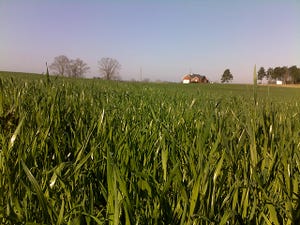
“So, I came up with the idea of the singing video, ‘Water and Poo,’ as a humorous way to tell about nutrient management. I figured I’d be lucky if a couple of hundred people viewed it, but it has had thousands of views.
“I’ve done a few other singing videos, about milk prices, hay production, and other aspects of our farm operation. They’re usually in humorous vein — but they always have a message of positive reinforcement about the practice I’m spotlighting.
“I’ve done about 50 videos and most are pretty straightforward, about farming operations such as harvesting silage corn, or about ag issues, legislation, etc.
“Although I use all these media — website, blog, Facebook, Twitter, YouTube — I share the same message, in different form, across all the platforms. The videos are great for drawing people to our website and to follow us on Twitter.”
The YouTube “Water and Poo” video concludes thusly:
Hi, I’m Will Gilmer of Gilmer Dairy Farm. To learn more about how we care for our environment, our animals, and our community, visit www.gilmerdairyfarm.com. Thank you for your continued support of America’s dairy farm families — and have a dairy good day.
About the Author(s)
You May Also Like



